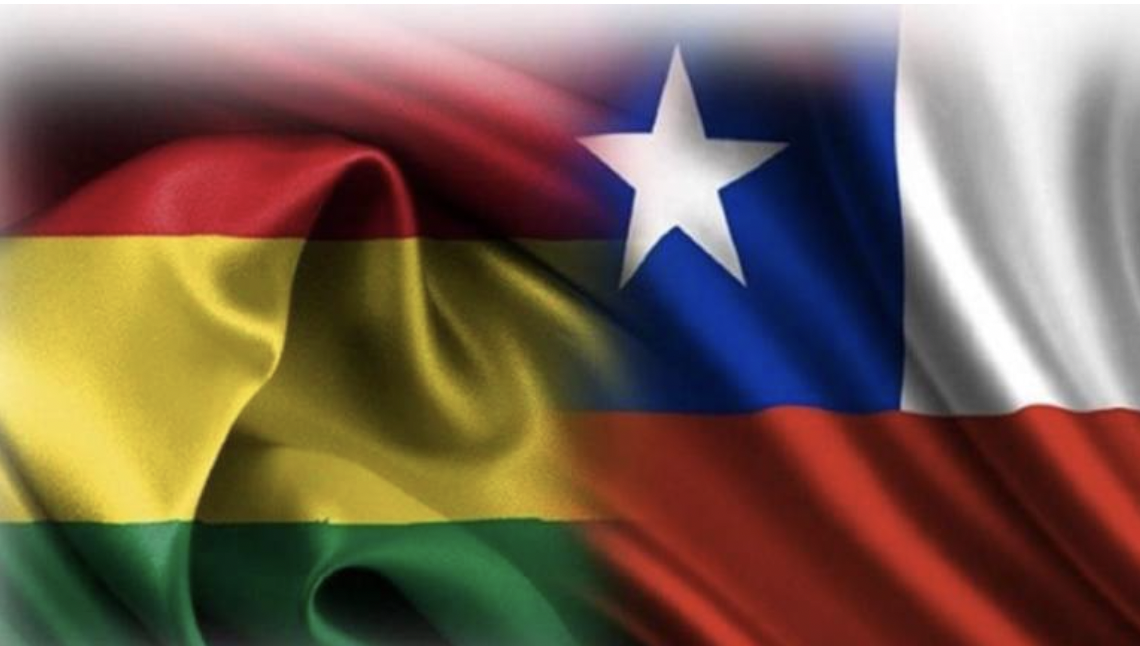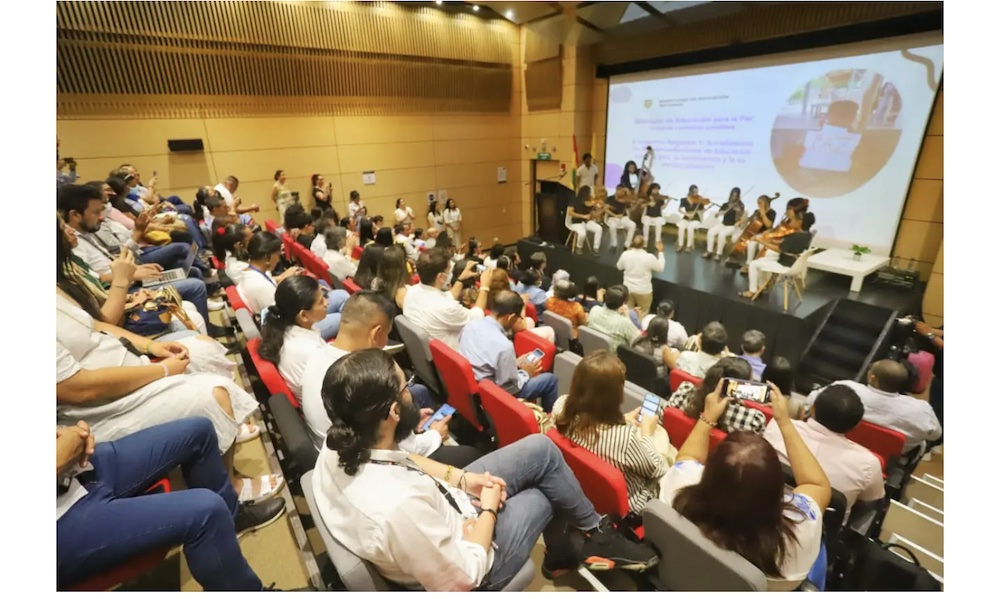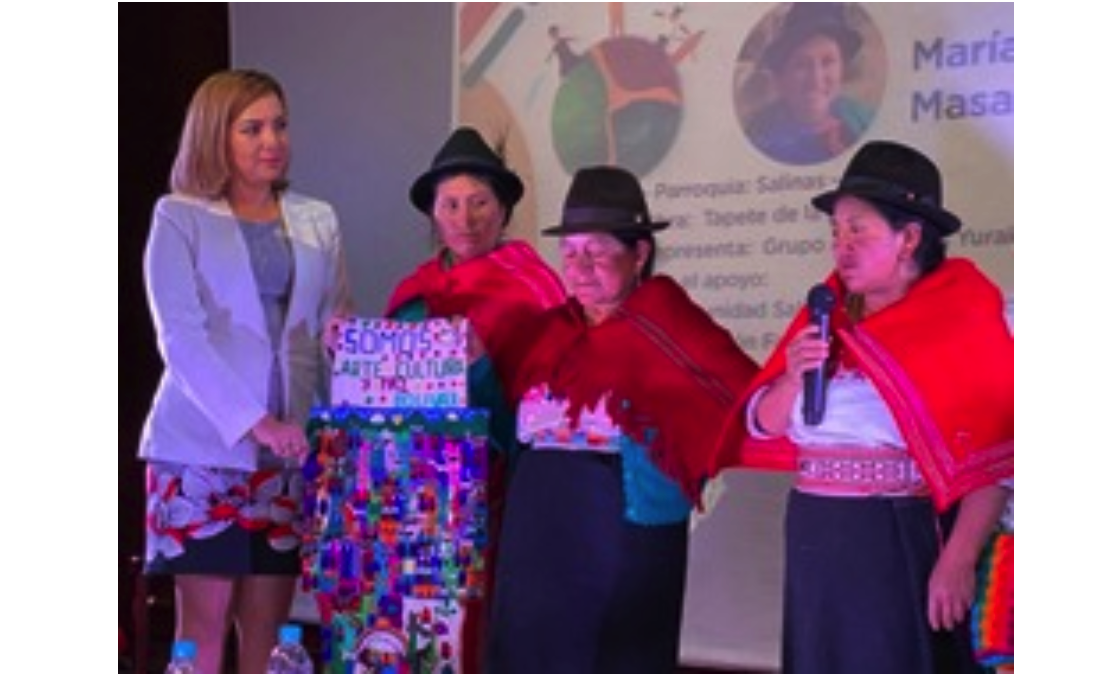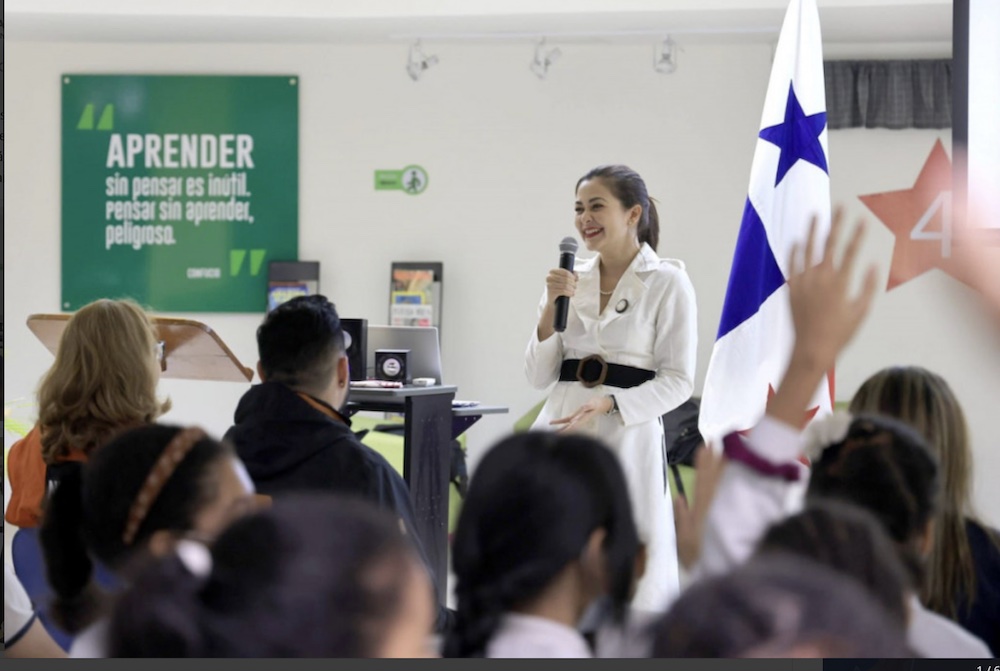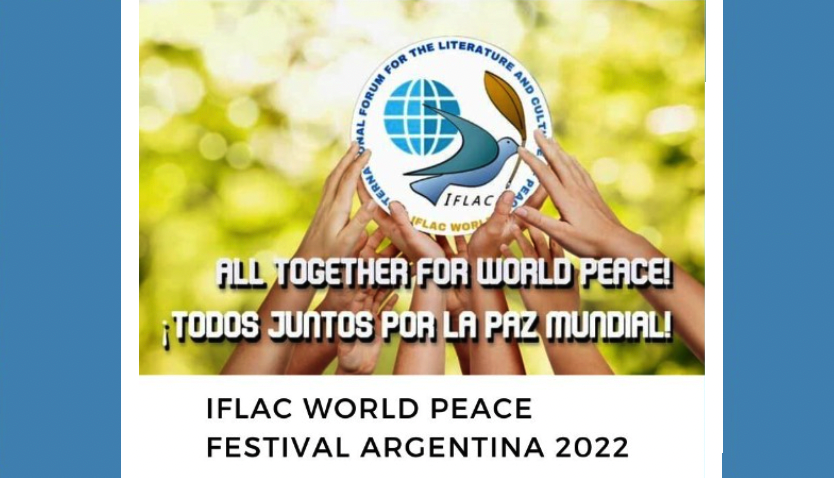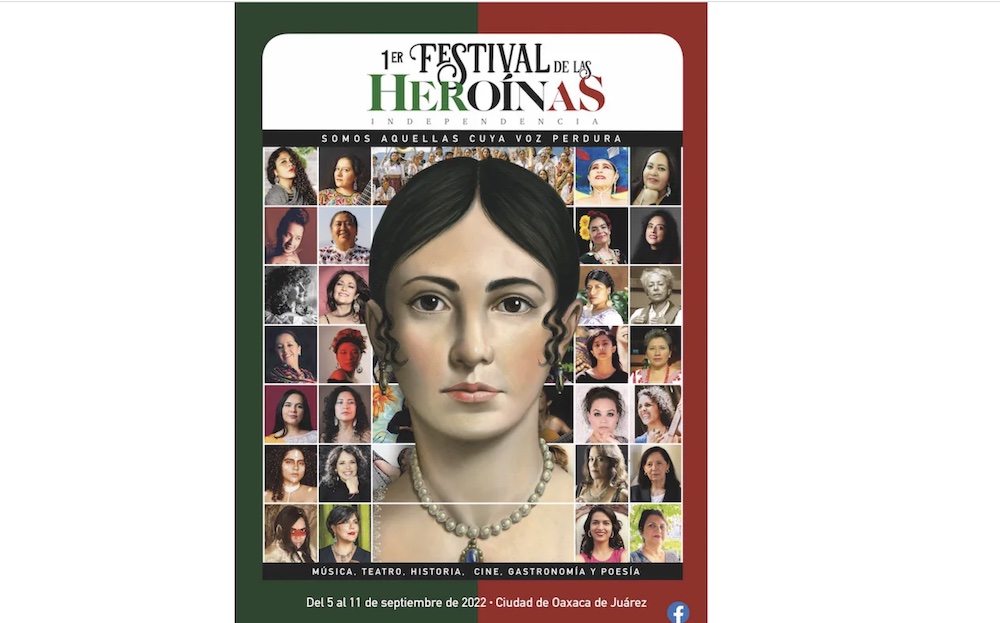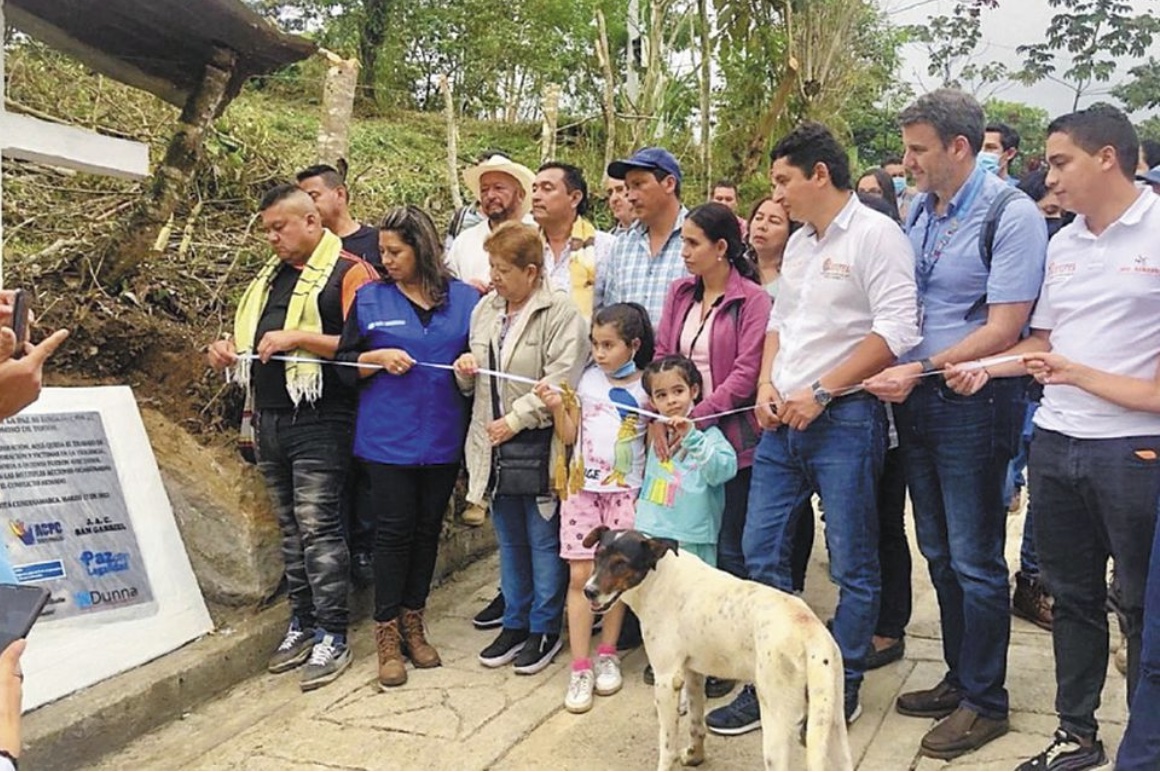FREE FLOW OF INFORMATION .
A survey by CPNN
The following 52 events in 12 Latin American countries include those listed in Google during the weeks of September 17-28 this year under the key words “International day of peace”, “Dia Internacional da Paz” and “Día Internacional de la Paz” The events also includes some listed on the facebook page of the International Cities of Peace.
About 48 events are listed in One Day One Choir and Montessori schools singing for peace, but there is no indication which events took place this year and which took place only in previous years.
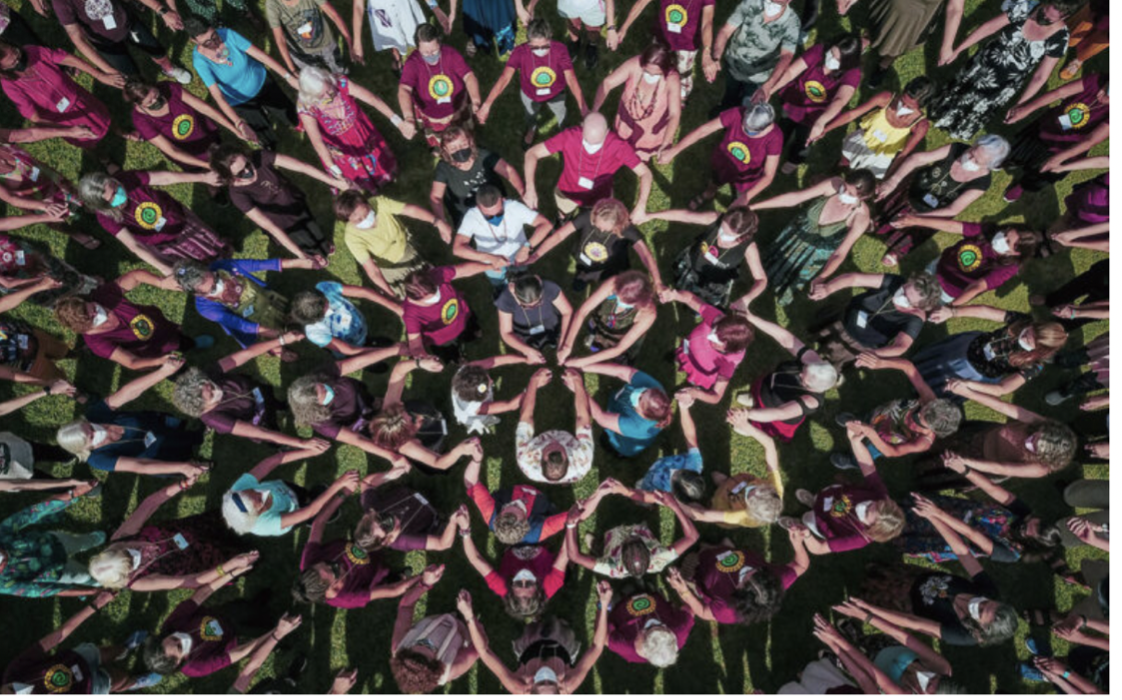
Brazil, the Satsung Spring Ball, September 21
ARGENTINA, FORMOSA
The Directorate for Alternative Conflict Resolution is organizing a talk open to the general public on dialogue and good interpersonal relations, which will take place on the 21st of this month at 6:00 p.m., in the Judicial School room, on the sixth floor of the Court building, 641 San Martín street in the city of Formosa. The activity is part of the International Day of Peace that is commemorated on September 21 of each year. In the cities of Clorinda and El Colorado and with different speakers, the same talk will be replicated on the same day at the same time. . . The director of the area of Alternative Conflict Resolution, María Irma González, said that the unit under her charge intends to celebrate the Day of Peace with various inclusive activities, which will be aimed at the community in general, in order to promote dialogue, listening, empathy, and non-violence.. . . The activities will consist of making a drawing or a phrase that represents peace, which will be to design almanacs for the year 2023, which will be distributed in the different offices of the Judicial Power of the province, concluding with a release of white balloons, as a representation of peace.
ARGENTINA, JUJUY
City councilors participated in the act in commemoration of the International Day of Peace, an opportunity in which they delivered diplomas and exhibited a bell-shaped model, as a symbol of Peace, to different educational institutions in the city.
ARGENTINA, MALARGUE
Meeting of Sculptors for the International Day of Peace. From the Rotary Club Malargüe, every year they carry out activities in the department, for the International Day of Peace,
ARGENTINA, OLIVOS
Celebration of the International Day of Peace. Campaign for one million hearts and smiles for peace. Come make and exchange your origami heart to announce peace. 21 September, 10:30, 2502 Maipu Avenue, Olivos.
ARGENTINA, POSADAS
In commemoration of September 21, which is the International Day of Peace, promoted by the United Nations General Assembly in order to promote the ideals of peace in all nations and peoples of the world, the Government Secretariat of the Municipality of Posadas presents the third meeting “Posadas Dialogues for Peace” to be held in the “Tierra Sin Mal” Auditorium of the Villa Cultural La Estación . . . This event is possible thanks to the articulated work of the areas of the General Directorate of Human Rights and the General Directorate of Participatory Methods for Conflict Resolution and Citizen Strengthening, which propose a celebration of the month of Peace with a discussion that addresses the issue from different looks and looks.
ARGENTINA, RIO GRANDE
At least 30 runners will star this Sunday 18 (concentration, 8:45; start, 9:30) the 12th 5K Provincial Championship (10th International Day of Peace Run), organized by the End of the World Athletic Group (AAFM ) and the Rotary Club Isla Grande (RCIG).
ARGENTINA, USHUAIA
The activities will be first of all on September 17 at Casa Beban starting at 5:00 p.m., where the southern peace movement, the Sembrando Cultura foundation and the Municipality will promote the Peace Day “Build your own crane”, inviting neighbors to make a paper crane, a millennial symbol of happiness and part of the Children’s Peace Monument that represents Sadako Sasaki, a victim of the Hiroshima bomb. Already on September 21, at 11:00 a.m. the event will be held in the framework of the International Day of Peace and the 10th Anniversary of the Plaza Campana de la Paz, the Austral Peace movement, the Mil Milenios de Paz Foundation , the Cooperativa Sembrando Cultura and the Ministry of Culture and Education will carry out an activity in commemoration of the date.
BOLIVIA, EL ALTO
In commemoration of the International Day of Peace, Fundación CONSTRUIR participated on Thursday, September 22, 2022 in the “XIII Fair for the International Day of Peace, at an end to discrimination. Build Peace” organized by different institutions such as SEPAMOS, CEBIAE, OMAK, CHASKI, among others. The event took place in the city of El Alto, in the vicinity of the Red cable car in the 16 de Julio area.
BRAZIL, ARANGUA
This Wednesday’s rain did not disturb the celebrations of the International Day of Peace promoted by the Casa da Fraternity together with different religious segments and society in Ararangua. The night was exciting and the atmosphere of harmony and peace between the leaders who participated was beautiful!
BRAZIL, BELEM
On the 24th of September , the League of Combatants together with the ADFA (Association of the Disabled of the Armed Forces) will hold the “ March for Peace 2022 ”, within the scope of the International Day of Peace. The March will begin at the entrance of the Museu do Combatente/Forte do Bom Sucesso, in Belém, and the route will be as usual along Avenida Brasília to the Museum of Electricity/MAAT and back, arriving at the same place next to the entrance. from the Combatant Museum/Forte do Bom Sucesso.
BRAZIL, BELO HORIZONTE
To celebrate the date and its meaning, DIÁRIO DO COMÉRCIO and Brahma Kumaris hold, on September 25 , the Walk for Peace .The event is free and open to the public, departing at 8 am from Marco Zero, in Lagoa da Pampulha , heading to the Ecological Park.The route of about 2 kilometers will be an opportunity to reflect on peace, exercise and have fun with playful surprises along the way.At the end, in the midst of nature, there will be a special closing moment with group meditation and musical presentation by the handpan player Thiago Peixoto .
BRAZIL, CAMPINAS
I MARCHA DA PEACE, JOY AND ART 2022″ , on the 25th of September 2022, also motivated by the celebration of the INTERNATIONAL DAY OF PEACE.
BRAZIL, CURITIBA
A special invitation from Brazil for peace and the planet. Paulo Barddal, International Cities of Peace, Curitiba, Brazil, Universal Circle of Ambassadors of Peace
BRAZIL, FLORIANAPOLIS, SANTA CATARINA
Alesc receives seminar “Best Practices for a Culture of Peace”. Assembleia Legislativa de Santa Catarina. To celebrate the International Day of Peace, the Legislative Assembly hosted this Wednesday (21) a seminar on good practices for a culture of peace.
BRAZIL, GUAIBA
On the International Day of Peace, this Wednesday (21), students from the Gomes Jardim State Institute of Education formed a hug around the Farroupilha Cypress, a tree that is a symbol of Guaíba and a cultural heritage of the state. In the place where the Farroupilha Revolution began 187 years ago, students asked for more peace, unity, solidarity, positive energies for the city and the planet. The prayed Our Father for the 403 people who died as a result of the pandemic in Guaíba. On the way to the Historic Site, they distributed free hugs to traders and people on the streets and distributed messages and the dove of peace.
BRAZIL, GUARULHOS
In celebration of the International Day of Peace (September 21), the City of Guarulhos promotes the second edition of Guarulhos de Mãos Dadas pela Paz, in the main tent of Bosque Maia. The program begins with a Tai Ji Qi Gong class, a body practice that helps to strengthen breathing, which will be led by physical educator Manoel Eloildo Felix da Silva at 9:15 am. Then, at 9:45 am, there will be the Circular Dances for Peace workshop, a movement virtually created by Friedel Klokle-Eibl, a leading exponent of circular dances from the Netherlands, who invited practitioners from different countries to contribute, by holding hands in a circle, to dance for peace and for a world open to tolerance. To conclude, at 11:15 am, the construction of a human mandala will begin with the participants as a symbol of reciprocity and harmony, under the coordination of Renate Sewing de Paula, an artist from the city dedicated to the creation of mandalas. The work will be donated to one of the municipal health facilities as a decorative art and a symbol of peace.
BRAZIL, IGARASSU
Hands providing peace. Today, September 21, 2022, was one of the best experiences of my life in the construction of cultures of peace. I was invited to accompany the kids in a local school in an action for peace. The kids offered hearts, smiles and hugs to others who responded to the invitation with smiles and hugs. Peace is more than possible, it is real and it begins with each little act of the heart. Edmario Jobat, International Cities of Peace, Igarassu, Brazil, Universal Circle of Ambassadors of Peace, Living Peace International.
BRAZIL, JUAZEIRO
In order to reflect on the culture of peace, schools in the municipal education network of Juazeiro, held on the morning of this Tuesday (06), the traditional walk alluding to the International Day of Peace, celebrated in the month of September. The action is also part of the calendar of pedagogical activities of the municipality related to September 7, and receives full support from the City of Juazeiro, through the Secretary of Education and Youth (Seduc). In all, 10 municipal schools participated in the occasion, bringing together students, family members, managers, the school community and the local community.
BRAZIL, MARECHAL CÂNDIDO RONDON
Students and pedagogical team from Colégio Paulo Freire, in Marechal Cândido Rondon, carried out on the morning of this Wednesday (31 agosto) the Peace Walk, which is part of the Family at School project, carried out by the Association of Parents, Teachers and Employees ( APMF), and is sponsored by Itaipu Binacional. The purpose of the march was to promote reflection on the culture of peace. In addition, the students and the school administration delivered to the Rondonian Executive, represented by the deputy mayor Ilario Hofstaetter, a document with strategies to promote peace in the municipality. Among the measures presented to the deputy mayor is the implementation of the International Day of Peace in Marechal Rondo to generate awareness in the community about the culture of peace.
BRAZIL, PROCASA
More than 300 children, students, parents, education and health professionals took to the streets of the Procasa community, in Barreiros, this Wednesday morning (21) to ask for peace. The 7th Peace Walk is a promotion of the Municipal Basic School (EBM) Altino Corsino da Silva Flores, which invites other health and educational institutions nearby to join in this cause. . . . Each participating educational institution addressed the theme in the classroom and prepared elements to symbolize peace. EBM students Altino Corsino da Silva Flores carried paper hearts, EVA birds and smiling emojis. . . . Children from CEI Santos Dumont, on the other hand, produced mini flags with drawings and affectionate messages with white paper.
BRAZIL, SÃO JOSÉ DOS CAMPOS
The 2022 edition of the Spring Satsang, in São José dos Campos, will feature five days of celebration and experience in honor of the International Day of Peace and the beginning of the new season. With experiences of circular dances, guided by João Paulo Pessoa and Guataçara Monteiro, the Spring Ball has as its theme the awakening of a new season. The main idea is to create a peaceful atmosphere that connects everyone who wants to participate with the essence of the Brazilian people’s culture of peace.
BRAZIL, VICENTINA
This Saturday (24), Parque Vicentina Aranha hosts the 10th edition of the Festival Te Ofereço A Paz, under the theme Reconnection. The program starts at 9 am and will take place in different areas of the Park, with more than 15 activities that encourage lightness and well-being through direct contact with people, methods, techniques and therapies that promote the search for peace on three levels. : with oneself, with the other and with nature. Conceived by psychologist Sonia Redi, the multidisciplinary festival takes place in celebration of the International Day of Peace (September 21), an initiative established by the United Nations. Among the programmed activities are yoga, reiki, quick massages, music, circular dance, lectures and experiences with bioenergetics, in addition to an exclusive space for children.
CHILE, CHIGUAYANTE
Concepcion Chiguayante School. In the context of the International Day of Peace and Nonviolence, the English Department celebrated this event at all levels of the school. The students participated in marches for peace (pre-school), creation of crafts and door decoration (basic education), work with the song “all you need is love” and creation of stickers (5th and 6th grade), creation of posters (7th to 1st grade) and discussions about types of violence in the school context and actions we can take (2nd to 4th grade)
COLOMBIA, ABBA FOUNDATION
In commemoration of the International Day of Peace 2022, Abba Colombia joins and highlights the work it is doing for peace, non-violence and non-discrimination in Colombia; for this reason, some young beneficiaries of Abba Colombia tell us about the importance of contributing to peace regardless of race, nationality, culture, economic or social status through our social media.
COLOMBIA, BOGOTA, PALACE OF JUSTICE
From this Wednesday, September 21, and until Friday, September 23, the Palace of Justice will be sheltered within the framework of the International Day of Peace and as a citizen demonstration to remember the rights to peace, a dignified life and the reconstruction of the collective memory of who have been victims of the Armed Conflict in Colombia. The Colombian house of justice will be covered with woven fabrics that were hand-made by dozens of people throughout the national territory and in 24 countries in Latin America and Europe, a sign of the commitment of those who believe in absolute peace as a path to non-repetition. In addition to the symbolic act, called Covering of the Palace of Justice, for three days there will be cultural exhibitions, academic talks and a fair of enterprises of victims of the armed conflict and signatories of the Agreement.
(Survey continued in right column)
Question related to this article:
What has happened this year (2022) for the International Day of Peace?
(Survey continued from left column)
COLOMBIA, BOGOTA, RED CROSS
Colombian Red Cross; Come and celebrate with us the International Day of Peace. Wednesday, 21 September, 2;00 PM, Bogotá Plaza Hotel. Through the synergy of the private and humanitarian sectors, we can achieve sustainability, development and peace.
COLOMBIA, MEDELLIN, UN MISSION
In Medellín, the celebration of the International Day of Peace began at the Presbítero Antonio José Bernal Londoño Educational Institution, where children painted peace. This activity, organized within the framework of the Month for Peace, will be extended during September and October in other schools and with the sons and daughters of the peace signatories in the different regions of Antioquia, with the support of Redepaz and the Mission of United Nations verification in Colombia.
COLOMBIA, MEDELLIN, CONCERT
Every September 21, the United Nations General Assembly celebrates the Intentional Day of Peace : an opportunity to strengthen the ideas of peace and Non-Violence. To be part of the celebration, the Medellín Philharmonic Orchestra invites you to the concert “Peace, music and silence”, to invite you to look at diversity, peace and respect life. The music of Ludwig van Beethoven and Franz Joseph Haydn will be the protagonists of this concert that will be directed by Adrian Chamorro, Colombian director, pedagogue and soloist.
COLOMBIA, OCAÑA
Campaign seeks to keep children away from violence in regions of Colombia Football as a generator of social change is what inspires the Fundación Selección Colombia and Spirit of Soccer to carry out programs such as Goals that Save Lives, designed so that nearly 300 children and adolescents have a life option in sports, far of violence. The first of the football festivals was held in Villavicencio (Meta) on September 13 and 14 . . . These programs will continue in Santander de Quilichao (Cauca), on the 16th and 17th of the same month, and Ocaña (Norte de Santander), on September 20th and 21st. . . It is an effort motivated by the celebration of the International Day of Peace of the United Nations, on September 21, but one that can be sustained over time and can benefit many more minors.
COLOMBIA, PALMIRA
With cultural events, plays, sporting events and the intervention of a mural in Bolívar Park, the International Day of Peace was celebrated this Wednesday, September 21, in Palmira.
COSTA RICA
The Ministry of Justice and Peace, the Ministry of Culture and Youth, the Ministry of Public Education and the Fire Department commemorated this September 21, the International Day of Peace, with the award ceremony for the “Song for Peace” Contest. “Today we celebrate the International Day of Peace and what better way than to do it through art and youth. Song for Peace is an example of the preventive work that the Ministry of Justice and Peace has been carrying out through the Vice Ministry of Peace, thanks to the commitment and joint work with public institutions and private companies”, said Sergio Sevilla, Vice Minister of Peace. .
CUBA, HABANA
The Cuban Institute of Friendship with the Peoples (ICAP) celebrated today the award ceremony of the national contest “Children paint and write for Peace”, an act that adds to the extensive program of activities that are carried out in this day, on the occasion of celebrating the International Day of Peace .
During a simple activity, the pioneers of the Arturo Montori elementary school made drawings related to peace and learned about the results of the national contest organized by the José Martí Pioneers Organization (OPJM) and ICAP.
ECUADOR, MANABI
The Provincial Directorate of the Judicial Council (CJ) of Manabí commemorated, this Monday, September 12, 2022, the International Day of Peace, with a dialogue in which experiences were shared about the work carried out by justices of the peace in their communities. The event took place in the House of Culture of Manabí and was attended by the Provincial Director of the CJ in the Disciplinary Field, Shamir Briones, the President of the Provincial Court of Justice, Carlos Zambrano, the Public Defender, Mauro Ponce, the Manabi artists, Danny Coveña and Eduardo Mendoza, justices of the peace, representatives of social organizations, students and teachers of the San Gregorio de Portoviejo University. The Provincial Director, Shamir Briones, in his speech mentioned that the Culture of Peace is a mechanism that has been promoted by the Council of the Judiciary in order to further expand the access of citizens to the justice system, especially in communities where through this mechanism, conflicts have been resolved without the parties having resorted to the Judicial Units.
ECUADOR, PORTOVIEJO
The Directorate of the Judicial Council of Manabi commemorated the International Day of Peace, with a dialogue in which experiences of the work carried out by justices of the peace in their communities were shared. The activity took place at the Casa de la Cultura, in Portoviejo, with the participation of justices of the peace and representatives of social organizations. La Direccion del Consejo de la judicatura de Manabi conmemmoro el Dia Internacional de la Paz, con un dialogo en el que se compartieron experiencias del trabajo que realizan los jueces de paz en sus comunidades. La actividad se efectuo en la Casa de la Cultura, en Portoviejo, con la participacion de jueces de paz y representantes de organizaciones sociales.
FRENCH GUYANA
Yesterday, Wednesday September 21, 2022 was the International Day of Peace. On this occasion, the NGO Club Soroptimist International went to the Saint-Paul nursing home to celebrate this day with the residents.
GUATEMALA, ESCUINTLA
In commemoration of the International Day of Peace, administrative staff of the Departmental Directorate of Education (Dideduc) of Escuintla, teachers and students carried out a civic act in the cultural center of the municipal seat. The notes of the marimba were heard in that room, in which students from the Intercultural Normal School made various performances. The activity was replicated in different establishments in the department. One of the schools that joined the celebration was the primary school of the Cañaveral II village, in Santa Lucía Cotzumalguapa.
MEXICO, BACALAR
Event poster: 21 September, International Day of Peace, May peace prevail on earth. Even free for all the family. In the Municipal Park of Badalar. 10:00 AM. Ceremony of banners. Peace declarations. Circular dances.
MEXICO, CAMARGO
The celebration of the International Day of Peace was held at the Josefa Ortiz de Domínguez Primary School. The director of the campus, Berenice de León Caro, stressed that directors, teachers, students and parents participated in this important date.
MEXICO, CANCUN
The municipal government of Benito Juárez, through the Directorate of Religious Affairs, commemorated the International Day of Peace with a significant participation of public servants who formed the word “Peace” and the symbol of the dove allusive to said message on the esplanade of the Plaza de la Reforma. The person in charge of the office of the Municipal Presidency, Lourdes Latife Cardona Muza, thanked the people who dressed in white, a color alluding to this day, which is celebrated every September 21, for their assistance. She emphasized that “with peace we will achieve a Cancun where we can all see each other as brothers and we can continue building and rebuilding the social fabric.”
MEXICO, COZUMEL
To commemorate the “International Day of Peace”, the Municipal Government, through the Education subdirectorate, held a civic ceremony this Wednesday morning called “Put an end to racism. Build peace”, with which a call is made to build a more peaceful community. Within the framework of this event that took place in the Quintana Roo park, the secretary general of the Cozumel City Council, Ociel González González, representing the municipal president, Juanita Alonso Marrufo, explained that peace is much more than the absence of a conflict, it is understanding others, it is educating the new generations to be good people, to understand that each one of us can rebuild our present and create everything we want through words, especially through our actions, since we all have the same circumstances in common, we share the same problems and the same conditions.
MEXICO, CULIACAN
Culiacan: Sinaloa will have a day of activities for peace, announces Building Spaces for Peace.
The activities will take place from September 19 to 24, since the International Day of Peace is commemorated on September 22
MEXICO, FELIPE CARRILLO PUERTO
The National System for Integral Family Development in Felipe Carrillo Puerto, carried out a Mayan ceremony on the esplanade of the Expomaya premises in the framework of the commemoration of the International Day of Peace, which is celebrated on September 21, every year, to raise awareness about the importance of having an environment free of violence.
MEXICO, GUANAJUATO
Within the framework of the International Day of Peace, which is celebrated on September 21 of each year, this Monday in Guanajuato began the ninth edition of the School Week for Peace 2022, which presents a program of more than 300 activities in which institutions The basic, upper middle and higher levels of the state will participate from September 19 to 23. . . . During the Week for Peace, the educational institutions of basic, upper secondary and higher education carry out cultural and recreational activities with the coordination of state and municipal agencies; through: workshops, conferences, webinars, cultural events and physical activations.
MEXICO, LÁZARO CÁRDENAS
By resolution of the United Nations Organization, September 21 is the International Day of Peace, and to commemorate the Fundación el Sol, based in Mexico, two concerts for peace will be held in this city, offered by the Philharmonic Orchestra by Lazaro Cardenas. at the concert on Wednesday 21, they will award recognition to humanitarian social leaders, who are . . . those who have contributed to peace in Lázaro Cárdenas.
MEXICO, MIGUEL ALEMAN
Within the framework of the celebration of the International Day of Peace , teaching staff and students from different elementary schools, carried out different student dynamics on the fields of their respective educational institutions. . . the basic level students carried out different group dynamics under the roof of the respective schools, after providing a detailed explanation by their teachers in relation to this date, as it is the International Day of Peace .
MEXICO, SAN LUIS POTOSI
Within the framework of the International Day of Peace and with the purpose of eradicating discrimination and contributing to the prevention of crime, the Family Welfare Coordination of the State DIF offered awareness talks on the culture of peace and free environments of violence.
MEXICO, TOLUCA
The City Council of Toluca invites the population to the commemorative event of the International Day of Peace, which will take place on Saturday, September 21 at 10:00 a.m. at the Morelos Theater. With the aim of raising awareness among Toluqueños to generate a healthy coexistence and promote the Culture of Peace as a lifestyle, the General Directorates of Social Welfare and Promotion and Guidance for Social Coexistence join this world celebration, in which will highlight topics such as the Rescue of Values, Conflict Resolution and Positive Attitude.
MEXICO, VERACRUZ
In order to promote the culture of peace , the community of Colegio Keystone Riviera Veracruzana held a peaceful march in Boca del Río . Dressed in white and with some posters with messages of peace, teachers and students from kindergarten, primary, secondary and high school, accompanied by their families, marched on Vicente Fox Boulevard. Rossana de Velasco, general coordinator of the Keystone Riviera Veracruzana School, explained that this activity is carried out within the framework of the International Day of Peace, which is celebrated on September 21.
MEXICO, ZACATECAS
The Secretariat of Women of the State of Zacatecas (Semujer), will carry out, on September 21, the State Meeting of Women: “Traveling together towards equality, love and peace” . It is organized during this day to commemorate the International Day of Peace. Women from the public administration of the state will participate in this event, as well as the media, academia and women from the business sector. From this meeting, it will be possible to generate ties between women and promote projects in which the participation of women has an impact on the daily and social life of the state. The importance of this space refers not only to recognizing the work that women carry out day by day from different trenches, but also to open a path for new generations.
NICARAGUA, ESTELI
Within the framework of inter-institutional collaboration and social bonding, volunteer students and teachers from FAREM-Estelí commemorated the international day of peace with activities carried out at the María Auxiliadora School, in district III of the city of Estelí. The first activity was carried out with third level children; Through songs, they reflected on the importance of promoting a culture of peace. Later, a piñata was held where peaceful attitudes, respect for order and the joy of living in peace were put into practice, with the motto “children want peace”. The second activity, carried out with fifth and sixth grade students, consisted of a deeper reflection on what it means to live in peace and its importance for the development of the community. Finally, drawings alluding to peace were made and their meaning was shared in plenary. In turn, the importance of peace in our lives was emphasized.
VENEZUELA
To the rhythm of a lively batucada followed by the dance therapy girls and the children from the INCES sports initiation schools, the march to celebrate the International Day of Peace fulfilled its mission of going through the streets of the point and circle, a route that was accompanied by a group of apprentices and workers from the General Management of Culture, Sports, Recreation and Community Participation of INCES. “ Walk for peace. End racism. Build peace”, was the slogan of a day that was accompanied by institutions such as: Terrestrial Transit, the PNB, the UNES, the National Institute Against Racial Discrimination, the National Service for Voluntary Disarmament, among others.
VENEZUELA, JUAN JOSE MORA
A large colloquium was held this Wednesday, September 21, for the International Day of Peace in the municipality of Juan José Mora. . . . . During the meeting, the institutions present spoke about the contribution that each represents to the development of peace in the municipality. . . .The activity was attended by representatives of the Preventive Front, Carabobo State Police, Municipal Police, National Police, Police Chaplaincy, Senamecf, SEGNA, Idenna, MINEC, Municipal Firefighters, Rescue Group 3000, teachers from the UBV, Insalud and other institutions. who with their daily work contribute to the establishment of a sense of peace and security.
